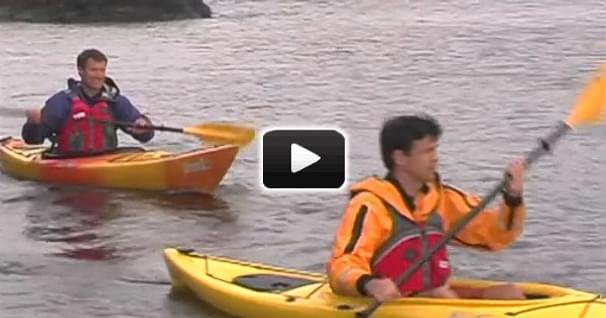Top 5 Kayak Safety Rules
One of the greatest things about kayaking is that it can be remarkably safe and user-friendly activity. But it's important to understand that when things do go wrong the fact that you are on the water means that situations can become very serious, very fast. This is why it's so important that you understand the risks and hazards involved with kayaking and that you assume a conservative and safety conscious attitude when making decisions on the water.
Don't Drink and Paddle
Now avoiding dangerous situations on the water is surprisingly easy by following a few simple safety rules. The first one being, don't drink alcohol and paddle. The two just don't mix.
50 years of lightweight, maneuverable, high-performing kayaks.
Check out this interview with Tom Keane, Eddyline Kayaks Co-Owner, on their journey!
Wear A Lifejacket
Number two, always wear a life jacket on the water. Now, one of the biggest reasons people take the life jacket off is because they find it uncomfortable to kayak with it on. And this is why it's worth investing in a kayaking specific life jacket because they are designed to be as comfortable and unrestricting as possible when you are sitting in a kayak or paddling.
Dress for Immersion
The third rule is always dress for the conditions. Cold water represents the biggest hazard because immersion in cold water can quickly lead to hypothermia. Now if you are going to be paddling in cold or cooler water, you need to be more conservative with all your decisions, and you need to paddle in calm conditions, close to shore and never alone.
Paddle in Your Skill Level
The fourth kayaking safety tip is to choose an appropriate paddling location for your skill level. The ideal kayaking environment has protection from wind and waves, a good access point for launching and landing, lots of places to go ashore and minimal motorized boat traffic. Look for calm bays or quiet lakes and river ways without noticeable current.
As a general rule, if you venture into water that is not protected from wind and waves and/or if you travel further from shore than you can comfortably swim, you are entering a new world - a world in which you need to protect yourself and the people you are paddling with by taking a sea kayaking course which among other things teaches you invaluable exposed water rescue skills.
Practice Kayak Re-Entry
The fifth and final kayaking safety tip that we are going to look at is to practice re-entering your kayak from the water before you ever need to do it for real. One thing that I can tell you is that re-entering a sit-on-top kayak is a lot easier than re-entering a sit-inside kayak because it won't swamp. In fact, just emptying your sit-inside kayak is a major ordeal on the water, especially if you don't have a bulkhead in your kayak. And a bulkhead is simply a wall in the kayak to divide into separate compartments so the whole thing won't swamp if you flip. Whatever type of kayak that you are using, if you can't confidently re-enter your kayak from the water then it only makes sense to stay close enough to shore that you can comfortably swim if need.
Five basic rules that will dramatically improve your safety on the water:
- Don't Drink and Paddle
- Wear A Lifejacket
- Dress for Immersion
- Paddle in Your Skill Level
- Practice Kayak Re-Entry
Related Articles
As the days get shorter and the weather gets colder, it becomes harder to get out and paddle and easier…
Hi, Jeff Little here. I'm the regional Pro Staff director for the Wilderness Systems Fishing Team. In…
I'm sure you'll be happy to hear that kayaking is a remarkably safe sport. In fact, compared to most…
Hi, I'm Robert Stehlik with Blue Planet Surf. I wanted to talk a little bit about moving around on the…




